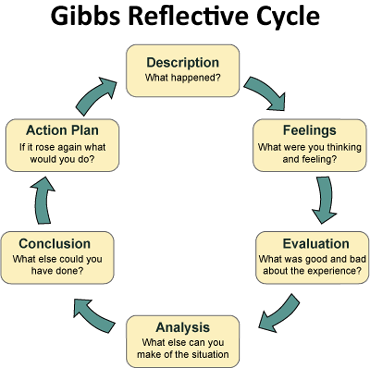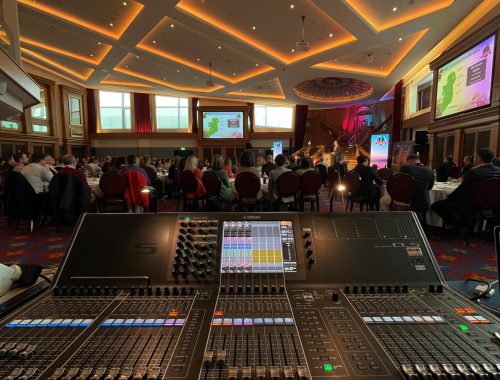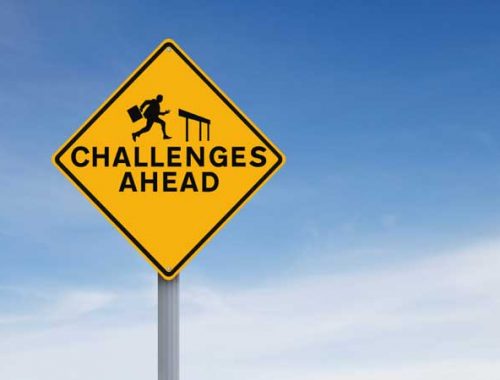What’s So Important About Music?
“Excuse me, why aren’t you in class?”, is a question I was not expecting to have directed towards me, three months into my work placement at Larne High School. I anticipated to tackle insightful questions regarding a variety of musical topics such as the complexities of music theory or the development of our everchanging music industry; I had not predicted a stand-off in the hallway with a fellow teacher, forced to prove my identity. In that moment I could feel the already dwindling level of respect I had built with the pupils, withering away as they realised my evidential lack of power and influence that I held. When I reflect upon the initial expectations of my placement experience, I imagined a school which would flourish under my musical influence, inspiring both students and teachers to find a passion within the subject, however 12 weeks in I hadn’t yet managed to introduce myself to most staff members, let alone convince anyone of the joys and wonders of the musical world.
Despite this minor ego bruise, my time at Larne High School has been a positive one. Over the past 6 months, I have had the privilege of witnessing some incredible musical talent from pupils of a variety of ages, who have inspired me as a musician, with a compelling desire to work hard and achieve their goals. From working under the Head of Department, Sarah Hughes, I have gained invaluable experience and knowledge, in preparation for a hopeful future as music teacher.
However, despite my mostly encouraging journey, my placement has presented many further challenges, beyond just a simple identity mix-up, which I will reflect upon and evaluate using Gibb’s reflective cycle.

https://www.crowe-associates.co.uk/coaching-tools/gibbs-reflective-cycle/
Music is Fun I Promise!
As I reflected in my first blog, it quickly became clear that the confidence I had instilled in myself, to instantaneously become the world’s most inspiring music teacher, was perhaps a naïve prospect. When explaining my plans in the staff room, to motivate my future pupils to discover their repressed love for the arts and find freedom in performing, I received pitiful nods and smiles as if in warning of the real challenge of music teaching: convincing a class full of pre-teen boys that music is in fact a real subject… and that maracas are not weapons.
Despite this, I was excited to teach my first class after weeks of shadowing Sarah, as I structured my lesson plan for the current year 8 topic, ‘The Elements of Music’: the first lesson surrounding dynamics.

https://juliajooya.com/2020/10/26/what-are-dynamics-in-music/
With my diagram displayed on the interactive whiteboard behind me, and 25 semi-interested faces staring in return, I explained the meaning behind each symbol and played examples of pieces which had contrasting dynamics such as Queen’s ‘Bohemian Rhapsody’. To my surprise, almost every child in the room recognised the song and began to sing along with great enthusiasm. As pleased as I was to see so many pupils enjoying the lesson, I quickly realised that the students hadn’t retained the information I provided as well as I would have hoped, as I carried out a short group exercise, testing their knowledge. I discovered that keeping a lesson engaging, but also informative was going to be a regular challenge, so where did I go wrong?
Fortunately, I had the chance to redeem myself as I had an additional year 8 class later in the day. I asked Sarah for feedback who gave me the idea of making the lesson more interactive but in a controlled manner; letting the kids sing along to Queen can be entertaining but is unlikely to provide many learning opportunities. Eric Booth explains the importance of ensuring participation when teaching music. It is crucial to provide opportunities for students to make their own connections to piece, identifying elements which they find intriguing; steering away from a more traditional route of analysing music which somewhat diminishes freedom to interpretation. “Great teaching artistry develops habits of mind for encountering new works of art. Such habits create connections not just between music and the mind but with the heart and spirit, where music really makes a difference in people’s lives.” (Booth, 2009 p.66). When concluding on the reflection of my first lesson, I knew that I had to allow the students further occasions to become included in the lesson, sparking motivation within the young musicians to think creatively, which they would be deprived of in many other subjects. “Motivation is not an ‘engine’ built inside an individual…it is the individual responding to a whole range of experiences”. (Hunt, 2006 p.5)
My action plan for the following year 8 class consisted of incorporating stimulating experiences into the lesson, allowing interaction between the pupils but ensuring it remained relevant for learning. Button (2010) emphasises that the most effective teachers provided their lessons in an engaging manner.
Anyone who has sat in a junior music class will understand the reaction one will inevitably receive when uttering the words “yes…we are using the instruments today”. I will never understand the excitement in shaking a plastic ball full of rice but nevertheless I thought I could use the popularity of the instruments to my advantage. With each child, instrument in hand, I explained how I would be conducting the class, demonstrating loud dynamics with wide open arms and soft dynamics with closed hands. From reflecting on the first lesson, I knew that keeping the attention of class was going to be a challenge with the potential distraction of the instruments, but I found that the students responded well to the visual cue of my hands, as opposed to trying to get their attention through shouting over a choir of 25 young and highly enthusiastic voices.

https://www.free-scores.com/boutique/accessories_828_shop_260.htm
With all considered, I am grateful to have faced these challenges throughout my time at Larne High School. I have developed the tools needed to face future challenges as I continue in my journey to become a teacher.
Word Count: 998
Bibliography
Button, S. (2010) ‘Music Teachers Perceptions of Effective Teaching’ Bulletin of the Council for Research in Music Education 183, pp. 25–38. Available at: https://www.jstor.org/stable/27861470?seq=1#metadata_info_tab_contents (Accessed 20 March 2022).
Crowe Associates Ltd (n.d) Gibbs Reflective cycle. Available at: https://www.crowe-associates.co.uk/coaching-tools/gibbs-reflective-cycle/ (Accessed: 24 March 2022).
Free Scores (n.d) Percussion. Available at:
https://www.free-scores.com/boutique/accessories_828_shop_260.htm (Accessed 20 March 2022).
Hunt, J. (1979) Managing People at Work. Berkshire: McGraw-Hill Book Company (UK) Limited
Jooya Teaching Resources (2021) What Are Dynamics in Music. Available at: https://juliajooya.com/2020/10/26/what-are-dynamics-in-music/ (Accessed 20 March 2022).


